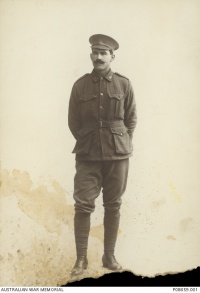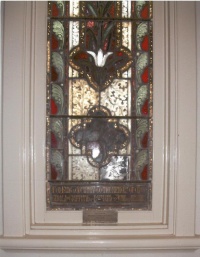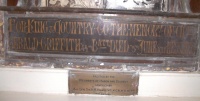Gerald Griffith
From The Orange Wiki
GRIFFITH, Gerald
Service no: 2042 [1]
Place of birth: Orange, 1890
Address: Jarnadup, WA
Occupation: Farmer
Next of kin: William Griffith (father), Glen View, March, via Orange
Date of enlistment: 2 May 1916
Place of enlistment: Belmont, WA
Age at enlistment: 26
Fate: Appointed Lance Corporal 20 June 1916. Promoted Corporal 1 October 1916. Embarked HMAT A23 Suffolk, Fremantle, WA, 10 October 1916. Disembarked Plymouth 2 December 1916. Marched in to 3rd Training Battalion, England, 3 December 1916. Embarked SS Invicta, Folkestone, for France, 4 February 1917. Arrived Etaples 4 February 1917. Marched out to unit 6 February 1917. Taken on strength with 44th Battalion, 8 February 1917. Wounded in action, receiving a bullet wound to the head, 4 June 1917. Died of wounds, No 2 Australian Casualty Clearing Station, 5 June 1917.
Date of death: 5 June 1917, aged 27
Buried: Military Cemetery, Trois Arbres, Steenwerck, France, Plot 1, Row N, Grave 10
On 29 May 1921 Sir Neville Howse unveiled a memorial stained glass window at the newly opened Methodist Church at March commemorating local lad Gerald Griffith, who was mortally wounded at Messines in Belgium in June 1917. A rendition of The Last Post sounded as the window was unveiled.
Born in Orange in 1890, Gerald was the second of eight children born to William Griffith and his wife Elizabeth (nee Brown) of Glen View at March.
Gerald was working as a farmer at Jarnadup in Western Australia when he enlisted in May 1916. He was appointed Lance Corporal the following month and promoted to Corporal on 1 October 1916. He embarked HMAT A23 Suffolk in Fremantle on 10 October 1916, and disembarked at Plymouth on 2 December 1916.
Corporal Griffith spent the next two months at training camp in England. In early February 1917 he was assigned to the 44th Battalion on the Western Front in France.
On 4 June 1917 the 44th Battalion was engaged in raids on German trenches at Catacombs, Hill 63 and Ploegsteert near Messines. They succeeded in entering the enemy lines, inflicting heavy casualties and capturing four soldiers of the 9th Bavarian Infantry Regiment. Corporal Griffith became one of the Battalion’s 22 casualties that day when he sustained a bullet wound to the head. He was transported to the nearby No 2 Australian Casualty Clearing Station, where he died the following day from his wounds. Corporal Griffith was buried that same day at Trois-Arbres Cemetery, Steenwerck, in a service presided over by Army Chaplain the Reverend GK Tucker.
In his will, Gerald Griffith bequeathed his possessions to his younger brother, Arnold Ralston Griffith. In February 1918 Gerald’s personal effects were returned to Australia via HMAT Ulysses. They included Gerald’s identity discs, a testament, three purses, a silver match box, razor, fountain pen, writing wallet cover, scissors, badge, three coins, correspondence and a handkerchief.
In addition to the stained glass window in the Uniting Church in March Gerald is commemorated on the March Public School Honour Roll and the World War I Roll of Honour on the southern face of the Orange Cenotaph.
Leader, 1 June 1921, p. 4.
Methodist Church at March - Memorial Window Unveiled [2]




